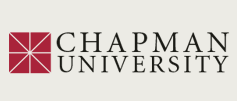Document Type
Article
Publication Date
11-30-2022
Abstract
A primary objective of creating competition among suppliers is the procurement of higher quality goods and services at lower prices. When procuring non-standard goods, it is often difficult to write a complete specification of desired quality in the contract. Thus, payments to suppliers cannot be perfectly conditioned on the quality provided. We propose a correlated contingent payment contract to mitigate the supplier moral hazard problem while retaining competitive supplier selection based on price. We treat the probability of implementing contingent payments as probabilistic. The selected supplier’s payment is, according to a fixed probability, either the amount of their bid or a quality contingent amount that depends on the bid and an exogenous norm for allocating social surplus. We use a lab experiment to show that there is a ‘Goldilocks’ region for high quality in which the probability of quality contingent payment is large enough to incentivize provision, but not so large as to induce overly aggressive bidding. This implementation only relies upon preferences for maximizing one’s own profit and the rationality of backward induction. An experimental finding not predicted in our setting is that suppliers earn positive economic profits inside the Goldilocks region, which can be explained by suppliers’ risk aversion. The results have implications for the effective design of contingent payments in contracts.
Recommended Citation
Walker, M. J., Shachat, J., & Wei, L. (2022). Contingent payments in procurement interactions - Experimental evidence. ESI Working Paper 22-18. https://digitalcommons.chapman.edu/esi_working_papers/379/

Comments
ESI Working Paper 22-18
Current version updated February 28, 2024.